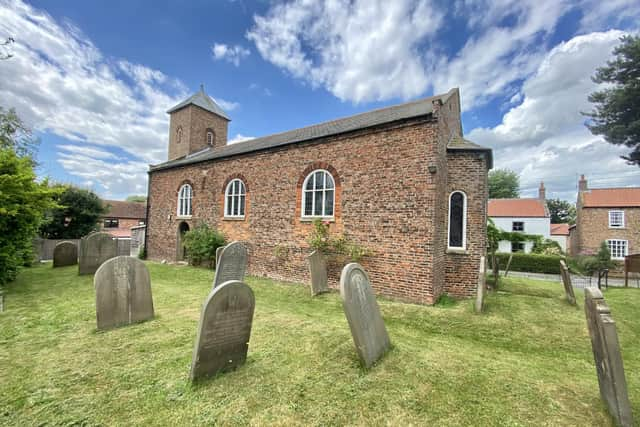Snowden Slights: The legendary grave in one of Yorkshire's most distinctive churches
The red-brown brick building standing on the west side of the village dates from the mid-1780s, although the bells were cast in the 14th century and come from an old chapel which previously occupied the site.
At one end of the church is a memorial to a parishioner, Anne Bray, who died before St. Mary’s was built. Providing pause for thought, it includes the lines: “All those that comes our graves to se, (sic) As we are now, so must you be.”
Advertisement
Hide AdAdvertisement
Hide AdThese days people who visit the small churchyard come to see the grave of another villager, situated as close as possible to the nearby River Derwent.


It is that of one Snowden Slights, who according to the headstone was born on 14th June 1829 and died on 15th April 15th 1913 aged 83. Less than a year before his death was published a now highly sought-after biography of his life by Sydney H. Smith.
The book turned Slights into a legend.
It revealed that prior to the first Wild Bird Protection Act of 1880 he had shot bitterns, dippers, kingfishers, fieldfares, skylarks and even rare spotted crakes, and sold them on markets in York and Leeds.
Many of his victims were bought by taxidermists, stuffed birds being popular with the Victorians.
Advertisement
Hide AdAdvertisement
Hide AdBut his enduring fame is as a wildfowler on the Derwent. According to his own (incomplete) records, between 1890 and 1907 he shot 5,355 birds from his punt alone.
On one occasion he killed 44 ducks with a single blast of lead shot, 24 of them mallard and the rest wigeon.
His artillery of 28 guns, including a 10ft long muzzle loader weighting 140lb, is on display at the Yorkshire Museum in York.